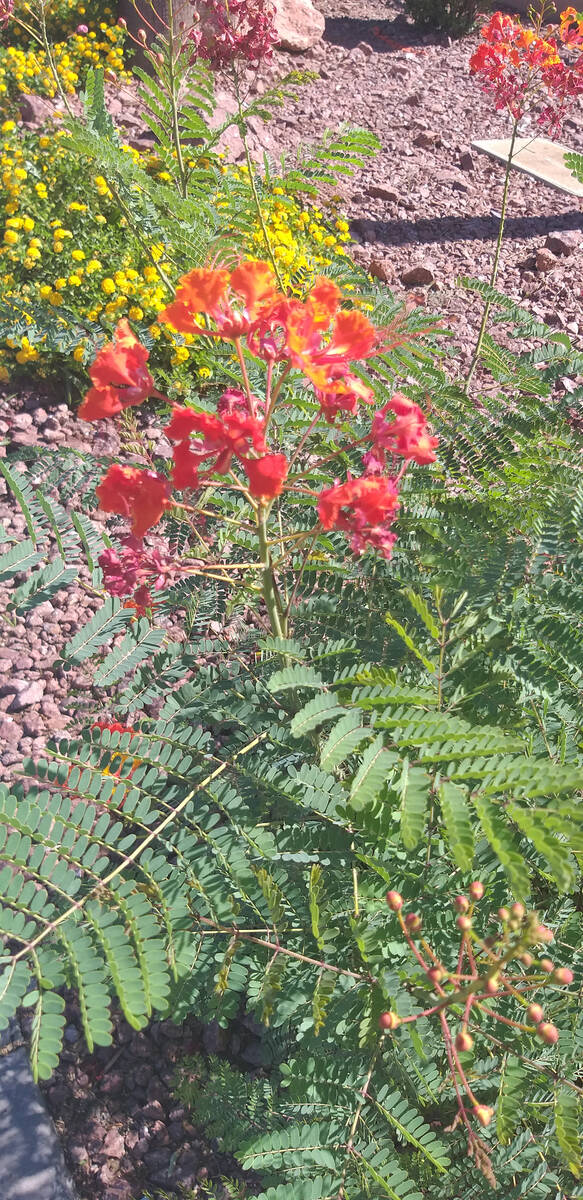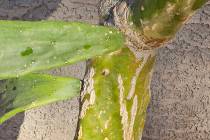Can scent tell me what kind of plant this is?
Q: I want to know the difference in the leaf smell of a bay laurel versus a Carolina cherry laurel. I am trying to see if what I bought was actually the right plant. I tried smelling the leaves and didn’t get a hint of a bay leaf or cherries. I’ve tried looking for glands at the end of the leaves and saw nothing.
A: You should smell a big difference between these two plants. The cherry laurel is in the rose family, while the bay laurel is in the laurel family. Smelling the leaves will tell you if it’s a bay leaf, but not a cherry laurel. My guess is you’re smelling the crushed leaves of cherry laurel if you don’t smell much, not bay laurel.
Crushing bay laurel leaves will produce a scent like bay leaves. The characteristic smell of bay laurel does not come from scent glands that you can see but from oils inside the leaves.
Cherry laurel leaves do not smell like cherries, but their flowers are fragrant. When its leaves are crushed, cherry laurel may smell more like almonds. The cherry laurel name refers to its laurel-like leaves and dark red, cherry-like fruit.
Q: I’m hoping you can help me identify the issue with our Mexican bird of paradise shrub/tree. There seem to be several branches where the bark is peeling off. I’m not sure if this is due to a disease, bug infestation or birds. The tree has been well-established for over 15 to 20 years and very healthy. This is the first time we’ve noticed this issue. Have you ever come across something like this?
A: The true Mexican bird of paradise is from north Mexico and parts of south Texas. It has yellow flowers with red inside the flowers. It freezes somewhere in the mid- to lower 20s. This plant can grow big in a few years — a small tree with a height of 15 to 20 feet.
There are also Mexican bird of paradise plants from South America, so the source of it is all mixed up. There are yellow- flowered forms, but the South American plant is smaller (somewhere around 15 feet tall) but with the same type of flower and more cold hardy. There are reports that this plant’s freezing temperature is below zero.
I’m just guessing, but I think the rain we had (and high humidity) may have caused this problem. It looks like a disease issue. You can remove the damaged branches or prune the plant to the ground and it will grow back quickly. It already has established roots that may not be diseased.
Whatever form you have, these plants are for the most part xeric (desert adapted) and do poorly when surrounded by water. You will kill it if there is poor drainage or it is planted in a lawn so that gets watered daily in the summer.
Q: I have an avocado pit that has roots and a stem about a foot long. Can I put it in a pot outside now, or should I leave it inside?
A: Low winter temperatures are the most problematic issue for avocados growing in the Las Vegas area. Most avocados can’t handle cold temperatures. They are tropical to subtropical. That’s why avocados are found growing in mid- to southern Florida and warmer parts of California.
Check your weather app. You are looking to avoid 30-degree temperatures.
The best place to put an avocado tree is on the east side of a home. Put it in a 5-gallon container, then place that in a 15-gallon container and put insulation around the 5-gallon container. The roots need protection from the sun in our climate when growing in containers.
The perfect growing spot would give the plant plenty of shade in the afternoons but still six to eight hours of full sunlight during the morning.
Q: We have an unknown variety of pomegranate in the garden that I pruned in December. Was that the right time to prune? If not, when should it be pruned for maximum fruit production? Also, would you recommend reducing the height of the remaining main stems?
A: Keep pomegranates pruned between 8 to 10 feet tall. They can be pruned anytime during the winter in our climate. Most pomegranates grown in the United States can handle winter temperatures between 15 and 20 degrees. Freezing winters are the main limiting factor geographically.
I would prune the longest stems of your young pomegranate bush in half to encourage side growth. But how you’re suggesting it will work. It’s a matter of preference. The plant doesn’t care.
Start at the bottom of the pomegranate and remove the thin growth or suckers in the spring. Leave four or five of the largest stems remaining. Then lower the plant height to about 8 to 10 feet. Larger fruit is produced from older wood. The flowers closest to larger wood produce the largest fruit. Leave all the side stems (thorns) sprouting from the larger wood. This is where the flowers originate.
When they are young, removing small fruit (thinning) might help. Pomegranate fruit is harvested from September into December depending on variety. Besides harvest times, there are other differences in pomegranate varieties. Some are sweeter. Some have soft seeds that are chewable.
The most common variety is Wonderful. It is harvested around Halloween. It’s juice is not as sweet and it has hard seeds that you have to spit out. But fruit is a gorgeous red.
Q: Our bougainvillea leaves turned brown and mostly fell off after the colder weather in January. When should we prune it, and how much effort is needed to try to rejuvenate it?
A: I would prune bougainvillea back in the spring, a few inches from the ground, when you can’t tolerate the look of it anymore. That might be now.
Q: Our Meyer lemon tree is in the backyard in the garden area. The leaves seem to curl up on both sides when the weather is colder in January and hotter in July. It did produce lemons in the summer of 2023, but I am not sure if the curled-up leaves are indicative of a problem. What do you recommend?
A: All fruit trees prefer to grow in wood chips rather than rock. Citrus fruits originate from the tropics or subtropics. In the desert, citrus wants to be protected from the hot sun. It also wants improved soil and water. All fruit trees prefer amended desert soil.
I would rake the rock back around your fruit trees about 3 or 4 feet in all directions. Put wood chips down about 2 to 3 inches deep in this area. This will improve their health, helping them handle high and low temperatures better.
Some citrus leaves curl when it gets hot or cold. That’s just their nature. They would prefer temperatures in the 70s and low 80s, but that’s not the desert. Fruit trees don’t like it too cold or too hot. Keep them as far as possible from hot south- or west-facing walls.
Bob Morris is a horticulture expert and professor emeritus of UNLV. Visit his blog at xtremehorticulture.blogspot.com. Send questions to Extremehort@aol.com.





























